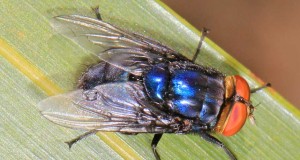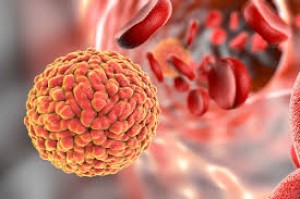Yeast Infections in the Mare Reproductive Tract

Many active endometrial (uterine) infections in broodmares caused by Candida have been attributed to prolonged intrauterine antibiotic therapy (1-6). Antibiotic usage can result in direct stimulation of yeast already present (1) . Antibiotics may also remove commensal organisms competing with the yeast for nutrients and space, as well as those secreting anti-fungal substances. These factors allow Candida to locally invade the endometrium and lead to clinical disease. It is also possible that pneumovagina (i.e., poor perineal conformation, a mare requiring a vulvoplasty or Caslick surgery) may favor the introduction and establishment of Candida infection in mares (6) .
Elimination of Candida from the equine uterine tract can be a difficult task. A number of treatments have been attempted, including uterine lavage or infusion with dilute tamed iodine solution, nystatin, amphotericin B, clotrimazole, miconazole, and /or vinegar or dilute acetic acid (4) . There have been numerous studies illustrating successes and failures of such treatment modalities. Another important aspect of endometrial Candida infections is the occasional spontaneous disappearance of the organism without treatment. There are many examples of this phenomenon in the literature (1-3,6).
The choice of an appropriate anti-fungal therapy, including those intended to treat yeasts, is made more difficult by the cost of some of the drugs, the lack of readily available susceptibility testing for these drugs, and the fact that many of the drugs come in a form not ideal for use in the equine reproductive tract (e.g., tablets or creams). Consultation with or referral to a reproductive specialist may be in order to adequately address the mare' s reproductive health and determine a specific course of treatment should it be deemed appropriate.
__________________
May 2002
Citations
1. Abou-Gabal, M., Hogle, R.M. , West, J.K. : Pyometra in a Mare Caused by Candida rugosa , J Am Vet Med Assoc 170(2):177-178, 1977.
2. Blue, M.G.: Mycotic invasion of the mare' s uterus, The Veterinary Record 113(6):131-132, 1983.
3. Brook, D: Diagnosis of equine endometrial candidiasis by direct smear and successful treatment with Amphotericin B and oxytetracycline, J So African Vet Assoc 53(4):261-263, 1982.
4. Ley, W.B.: Current thoughts on the treatment of acute endometritis in the mare. Veterinary Medicine 89(7): 648-660, 1994.
5. McKinnon, A.O. and Voss, J.L.: Equine Reproduction , Lea and Febiger, pp. 384-385, 1993.
6. Zafracas, A.M.: Candida infection of the genital tract in thoroughbred mares, J Reprod Fert , Suppl.23:349-351, 1975.
Dr. William B. Ley DVM, MS, DACT Articles
Related Links
Allowed: 64M/67108864KB.
Current: 6333KB. Peak: 6403KB.
























